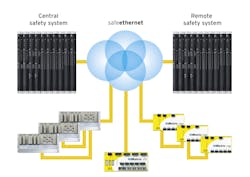New Safety Protocol for Efficient Migrations and Digitally Networked Plants of the Future
To help the process industry migrate to tomorrow's digitally networked plants, HIMA introduces a new protocol that enables Ethernet-based, safety-related communication (SIL 3). Now safe communication is enabled between the company's three safety controller families: HIMatrix, HIMax and HIQuad.
"HIMA supports the incremental digitalization of our customers' plants with very clear migration paths," said Peter Sieber, Vice President Global Sales at HIMA. "Customers can select and combine the best HIMA controller for their application and know that the safe, reliable and fast networking of HIPRO-S V2 and safeethernet will allow them to efficiently operate their digitally networked plant, even in the future. The HIPRO-S V2 protocol will help to accelerate commissioning and ensure the fast restart of the plant and reduce the risk of delays. A long service life, and thus optimum investment protection, are guaranteed."
Separate certification is not necessary
HIPRO-S V2 does not need a separate certificate, as it is a component of HIQuad, HIMax and HIMatrix controllers and is covered by their certificates. HIPRO-S V2 can be implemented universally.
Like safeethernet, developed by HIMA in 1997, HIPRO-S V2 uses UDP packets. These packets can be transmitted via standard Ethernet infrastructures, such as switches, firewalls, WLANs or devices, that are suitable for Ex zones. Use of these proven, industrial infrastructure components enables economical and reliable solutions.
HIMA safety protocols are distinct in that they can be operated in the same network with non-safe protocols; for example, Modbus TCP or the connection via OPC. Controllers can also be programmed via this network. This helps to reduces costs in generating and maintaining the network infrastructure.
>> For more information, click here

